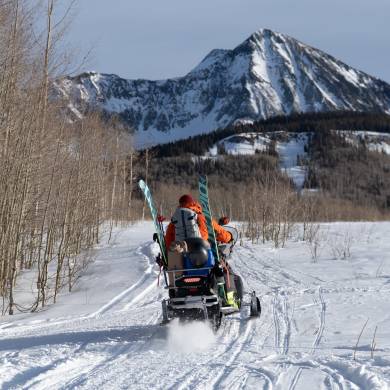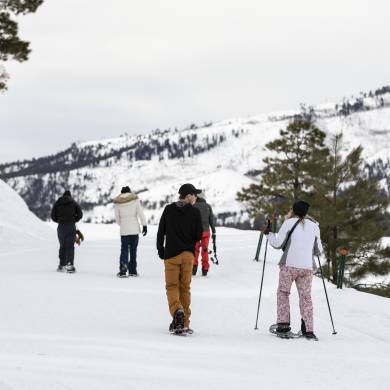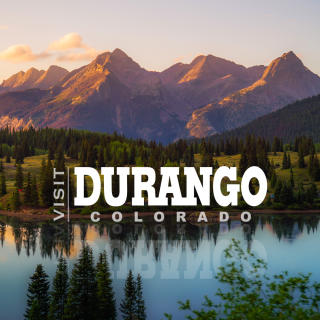Hiking Rules for More Fun and Less Stress on Your Outdoor Adventures
Durango’s many hiking trails are welcoming to visitors and locals, day-trippers and through-hikers alike, as well as mountain bikers, horseback riders, and ATV enthusiasts. Taking some time to get to know the trails could prevent unexpected inconveniences or even dangerous hazards.
Know before you go how to pack, what to wear, the level of experience required, and the rules of the trail—your future hiker will thank you for it.
Durango’s trails are also home to a vast array of indigenous plants, protected wildlife, and rare and endangered species that coexist with hikers and campers. Respecting the fragile ecosystems, as well as the other outdoor recreationists you may meet along the trail, will help maintain the balance as well as the beauty of Colorado’s nature preserves.
Here is our complete guide to trail etiquette to get you ready to hit the trail!
Durango Trail Etiquette 101
Some of our hiking etiquette tips are common sense, and some you may not have heard before. We’ll explain everything you need to know to enjoy and take care of Durango’s hiking trails.
Who Has the Right of Way: Hikers, Bikers, Trail Runners, or Horses?
Most of Durango’s trails are multi-use, and the many mountain bikers, horseback riders, and hikers give the trails a community feel. Navigating trails right of way is easy on mixed-use trails—bikes yield to hikers and runners, and everyone yields to horses.
If it is your responsibility to yield, slow your pace, establish communication, and be prepared to stop if necessary, to complete a safe pass. A friendly greeting to a horseback rider or a tuned ear for the bell of a passing biker will make your hike go smoothly and safely.
Stay Off Wet or Muddy Trails
Wet or muddy trails can cause more trouble than a mud-caked hiking boot. Muddy trails are more vulnerable to damage, causing harm to the surrounding ecosystem and potentially hazardous conditions—such as holes in the trail or washouts—for future hikers. Check with trail condition reports and weather predictions and consider staying home on wet days.
Keep Your Dog Under Control
For your pet’s safety, as well as the safety of others on the trail, keep your dog leashed or under voice control at all times. A dog roaming out of earshot of commands may encounter dangerous situations or disturb fellow trail users.
Also, it is important to note that the city of Durango requires dogs to be on leashes within the city limits. In La Plata county, dogs should be on leashes or under voice control.
Keep Your Music Down
Hiking along with your favorite tunes can be the perfect way to spend an afternoon, but make sure you are always aware of your surroundings. For your safety and the safety of others, keep personal music volume down in order to hear warnings of potential hazards and communications from other hikers.
Stay on Established Trails
Help preserve the natural beauty in Durango and the surrounding area by sticking to marked trails and designated campsites.
Shortcuts or other off-trail ventures can be tempting, but taking the long way on the established trail will maintain habitats for plants and wildlife.
Off-trail areas can also be potentially hazardous, and venturing past overlooks, up waterfalls, or into other unknown areas is dangerous. Wear appropriate footwear so that you can stay on the trail even when it becomes muddy or uneven, and not trample over trailside plants.
Leave No Trace
Durango’s wildlife, protected lands, and endemic species of flora and fauna are integral to the natural beauty of the landscape. Keep them pristine by taking care not to disturb the order of the ecosystem around you. Leave plants, rocks, and historical items where you found them, and take a picture, not a physical item, to remember your trip by.
Refrain from building structures or carving into trees and rocks to preserve the landscape. Treat the outdoors with the respect you would give to a friend’s home so that everyone can continue to enjoy nature’s beauty.
Pack it In, Pack it Out
Try to leave every place you visit on a hike a little better than you found it. If you bring in trash, keep it with you until you reach a trash disposal site.
Even better, take any litter you come across and keep it with your trash to be responsibly disposed of. Do not leave apple cores, banana peels, or other biodegradable items on the trail, as they may disturb the local ecosystem.
Pick up after your pet and pack out their waste; if there are no toilets along your route, pick up after yourself as well, or use the “cat hole” method: a six-inch hole, cover it with leaves, and pack out any TP you may use. Make sure this is done away from water!
Know Before You Go
Do your research on the trail, area, and municipality that you will be traveling through. Get to know local guidelines and the details of the trail including potential hazards. Check weather conditions in advance of your trip and travel prepared for inclement weather.
Consider visiting off-peak destinations to minimize downtime and overcrowding, and take precautions against the dry climate with reusable water bottles or camelbacks. If you know before you go, you will be able to enjoy your trip without any unforeseen setbacks.
Keep Wildlife and Wilderness Wild
Durango’s local wildlife is vital to the protected ecosystems you visit on your hike and should be given ample space to go about their ways. Do not feed any of the animals you might encounter and keep pets on leash around wildlife.
Be mindful of baby animals, who are particularly fragile and are often accompanied by fiercely protective parents. For your safety as well as theirs, observe wildlife from afar and protect their natural habitats.
Plan Ahead and Prepare Accordingly
A successful hiking trip, whether into deep backcountry or on an afternoon stroll, will be all the more enjoyable with a little planning ahead of time. Make sure you know your route and use the buddy system, if possible when exploring new trails—you may also want to leave a copy of your itinerary in your car or send one to a friend.
Wear appropriate clothing, including layers, sturdy shoes, and weather-protective clothing if necessary. Carry essentials like water, snacks, a pocket knife, flashlights, and matches, as well as a small first aid kit in case of emergencies.
Most of all, know your limits—leave adequate time to arrive before sundown for day hikes and plan for enough sustenance and breaks along the way to maintain your energy. An overextended hike is not a fun hike, so know what you are getting into before you leave. Consider purchasing a Colorado Search and Rescue Card for your safety and peace of mind.
Conclusion
Durango, Colorado’s landscape is a very fragile place and needs all of our help to protect it. Respecting and protecting the plants, wildlife, and trail systems through some of the aforementioned guidelines ensures that generations of hikers, bikers, campers, OHVers, and everyone else can enjoy Durango’s incredible landscape for years to come.




